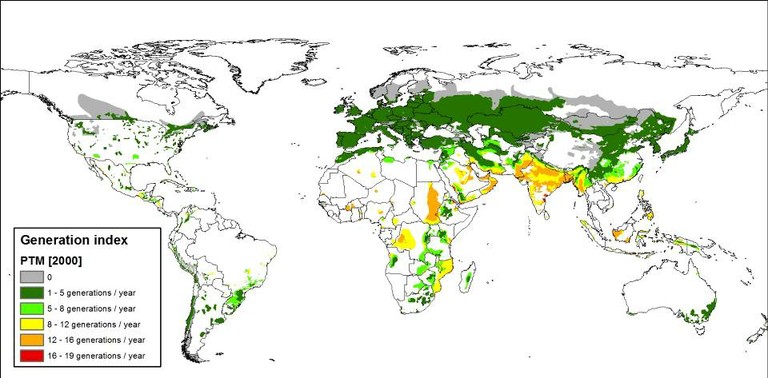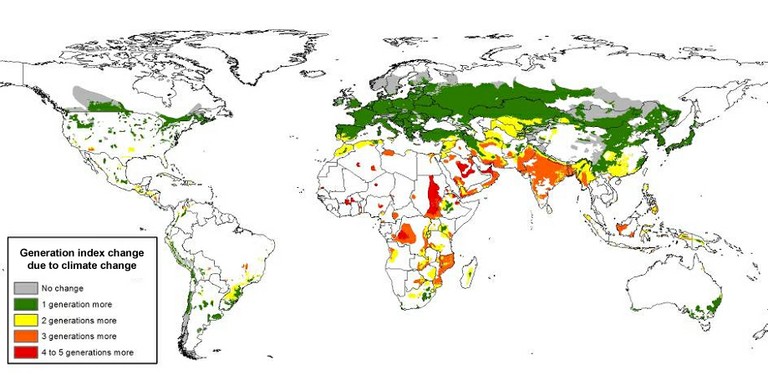Global warming is projected to raise the mean temperature of the earth by 1.5 to 5.8 ºC by the end of the century and is expected to aggravate the already serious challenges to food security and economic development, especially in developing countries. Recent predictions forecast, with a high probability (>90%), higher growing season temperatures in the tropics and subtropics that will exceed the most extreme seasonal temperatures recorded in the last century. Arthropods are exothermic organisms that cannot internally regulate their own temperature, and their development depends on the temperature to which they are exposed in the environment. Hence, temperature is considered, among climate-change elements, the dominant abiotic factor directly affecting herbivorous insects.
Models have become important analytical tools for the evaluation, understanding and prediction of the dynamics of insect populations in agroecosystems and in phytosanitary risk assessments. CIP developed a temperature-driven phenology model for the potato tuber moth (Phthorimaea operculella) that provides overall good predictions of population growth potential for the wide range of climatic conditions were the pest prevails today. Linked with geographic information systems (GIS) and atmospheric temperature the model allows simulating risk indices on a worldwide scale which are used to predict future changes of the species distribution due to global warming. The approach applied for the development and prediction of P. operculella can be utilized for other insect species. Hence, CIP developed Insect Life Cycle Modeling software (ILCYM) to facilitate the development of insect phenology models. Read more from the ILCYM website »
ILCYM consists of three main modules: The “Model builder”, which facilitates the development of insect phenology models based on life table data derived from constant temperature studies; the “Validation and simulation module”, which provides tools for validating the developed phenology model using insect life tables established at fluctuating temperature conditions; and the “Potential population distribution and risk mapping module”, in which the phenology models are implemented in a GIS environment that allows for spatial – global or regional – simulations of species activities and mapping.
In a collaborative effort between three International Agricultural Research Centers (CIP, IITA, and ICIPE), the University of Hohenheim, Germany and partners at NARI in Africa – funded by BMZ, Germany – innovative phenology modeling and risk mapping is used to understand the effects of rising temperatures caused by climate change on the distribution and severity of major insect pests on important food crops in Africa. The ILCYM software will be further improved and adapted to cover a wide range of insects of different orders and families. The results will contribute to fill the current knowledge gap about climate change effects on economically important insect herbivores and their natural enemies, especially in the tropics.
Climate change scenarios for the potato tuber moth, Phthorimaea operculella:

Generation index (generations/ year) under present temperature conditions

Change in numbers of generations per year by 2050 using the atmospheric general circulation model
